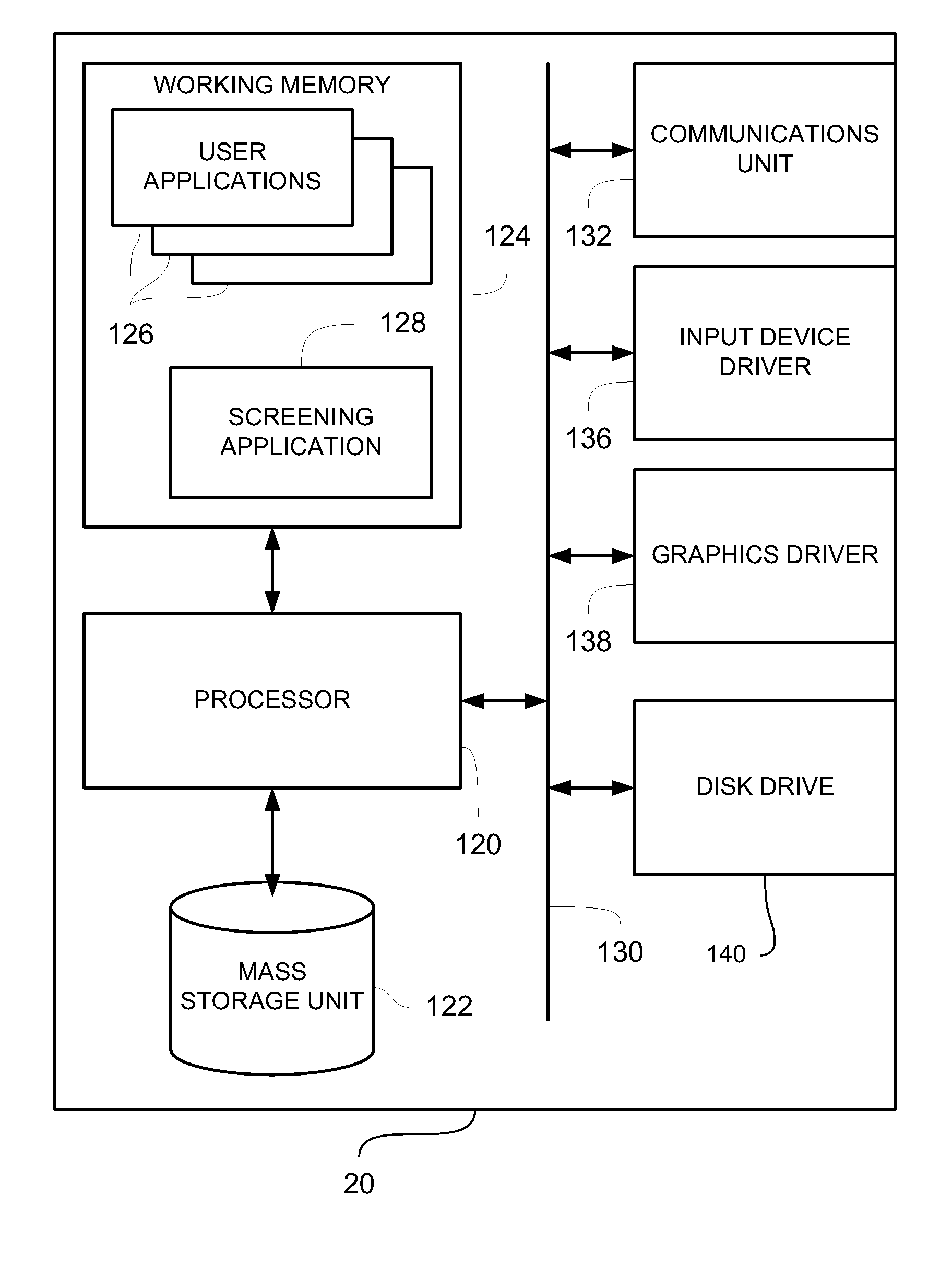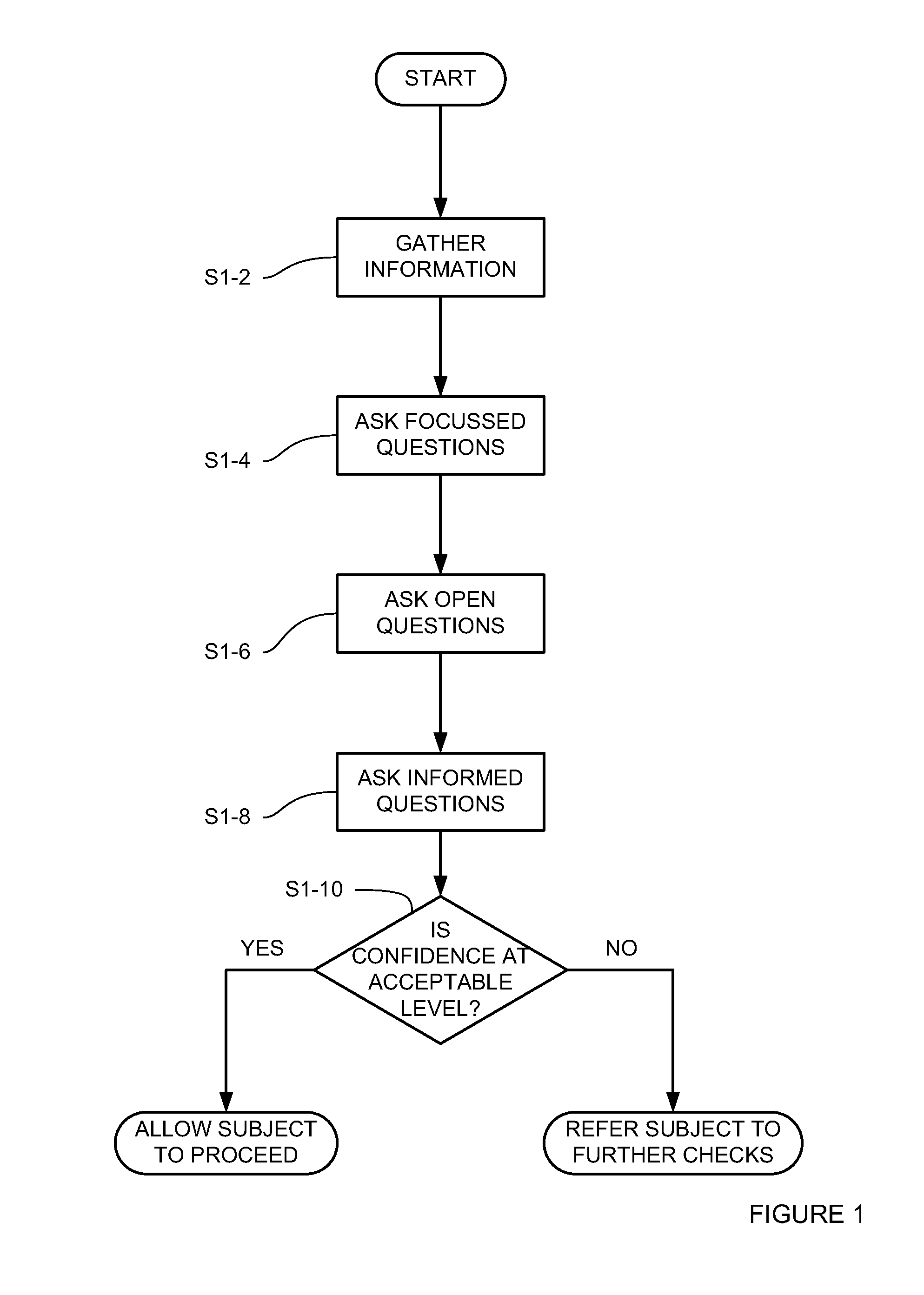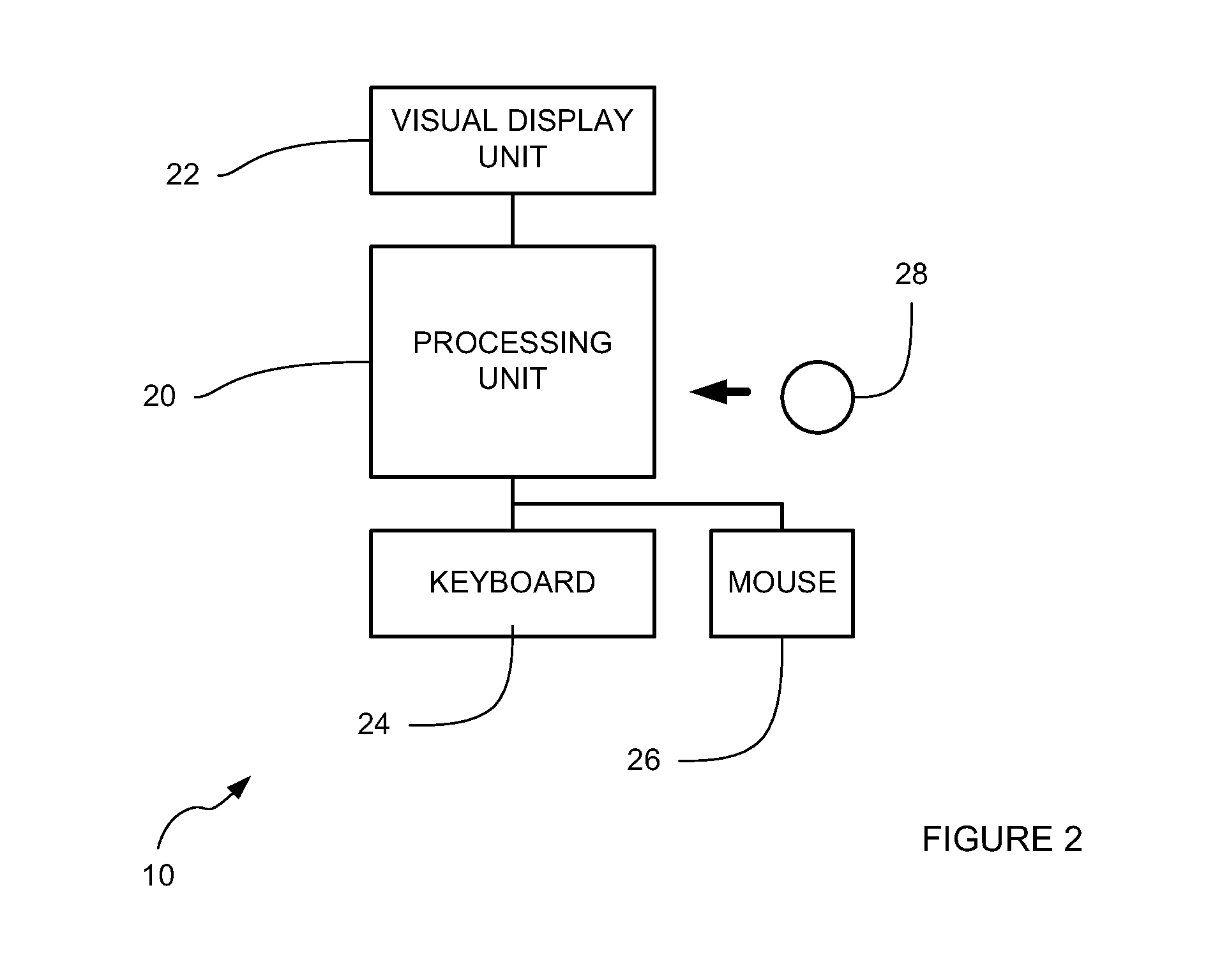Method of Screening People
a screening method and person technology, applied in the field of screening people, can solve the problems of insufficient effectiveness, divisive and prejudicial, and selective profiling element, and achieve the effect of judging the veracity
- Summary
- Abstract
- Description
- Claims
- Application Information
AI Technical Summary
Benefits of technology
Problems solved by technology
Method used
Image
Examples
Embodiment Construction
[0045]An embodiment described herein provides a process for managing a screening interaction with a passenger, such that more effective information can be gathered about the user's true intentions and identity in order that a judgement of veracity can be made.
[0046]An embodiment described herein comprises a method of screening a person, comprising establishing a baseline demeanour of the person, gathering personal information about the person, seeking further information from the person relating to that person's background, asking one or more questions intended to determine if said further information is consistent and reliable and, on the basis of answers to said questions and the demeanour of the person, determining a level of confidence in said person.
[0047]The level of confidence can be translated into a screening result. The screening result could be binary (i.e. “pass” or “fail”) or may involve one or more intermediate gradings.
[0048]The baseline demeanour may be established b...
PUM
 Login to View More
Login to View More Abstract
Description
Claims
Application Information
 Login to View More
Login to View More - R&D
- Intellectual Property
- Life Sciences
- Materials
- Tech Scout
- Unparalleled Data Quality
- Higher Quality Content
- 60% Fewer Hallucinations
Browse by: Latest US Patents, China's latest patents, Technical Efficacy Thesaurus, Application Domain, Technology Topic, Popular Technical Reports.
© 2025 PatSnap. All rights reserved.Legal|Privacy policy|Modern Slavery Act Transparency Statement|Sitemap|About US| Contact US: help@patsnap.com



